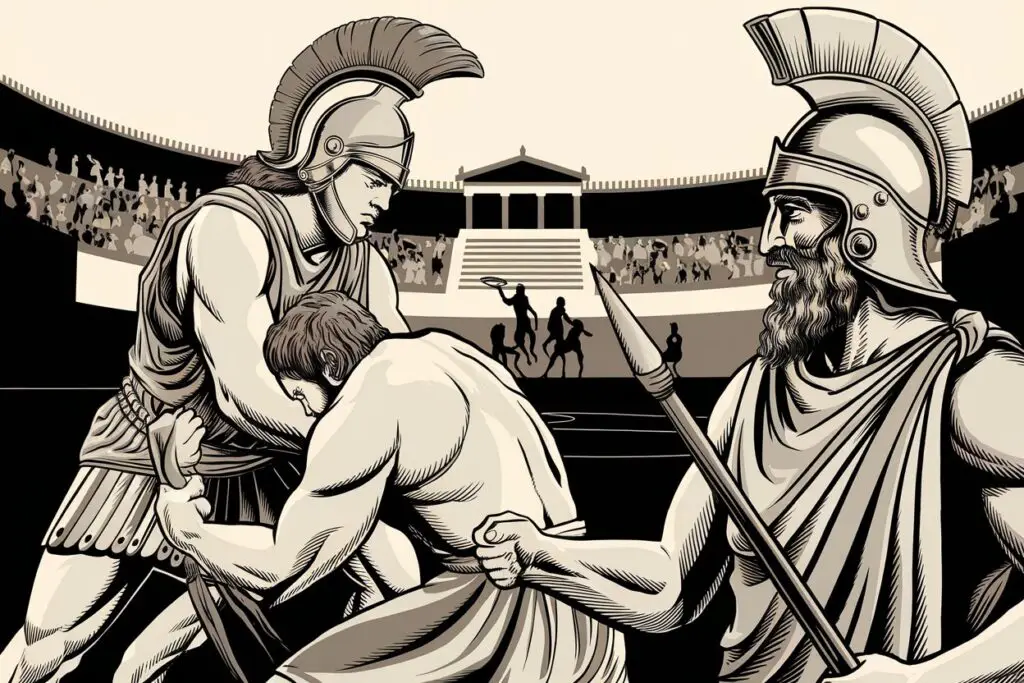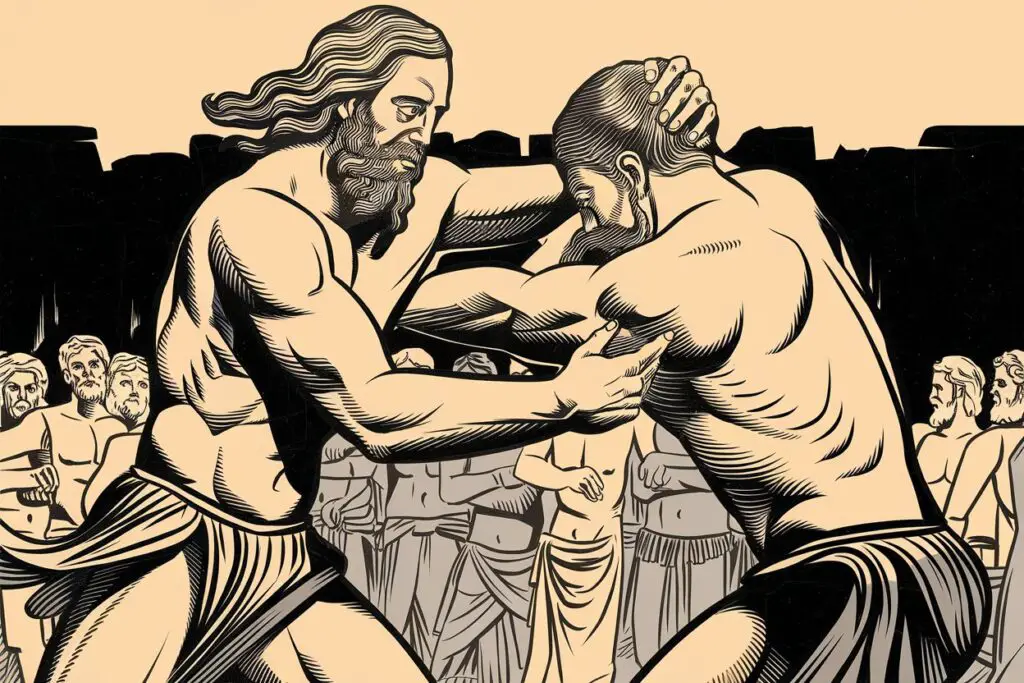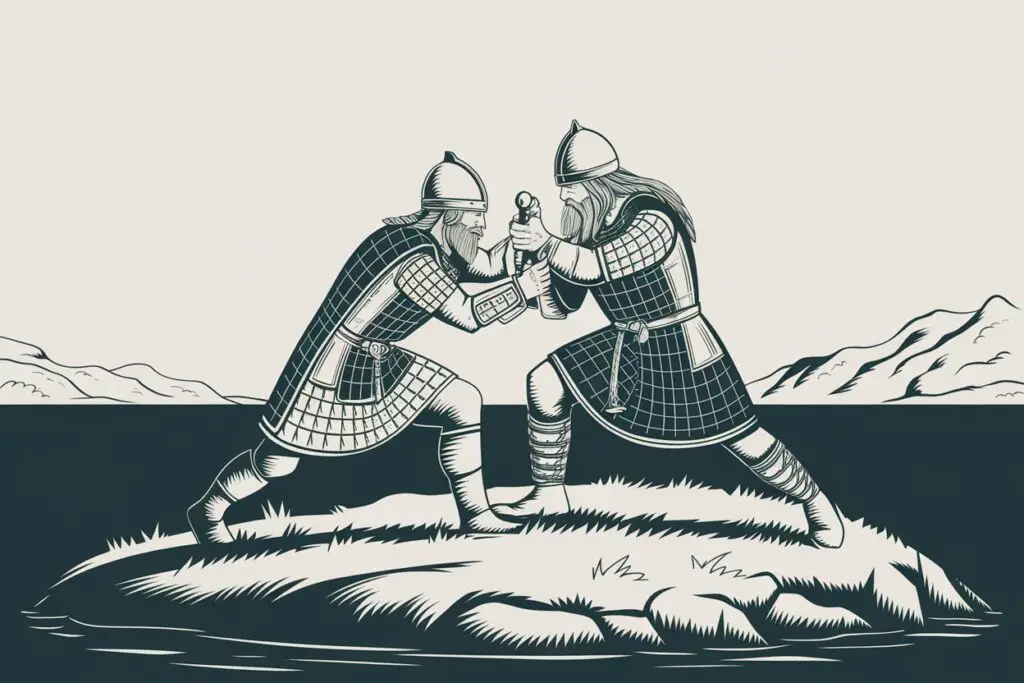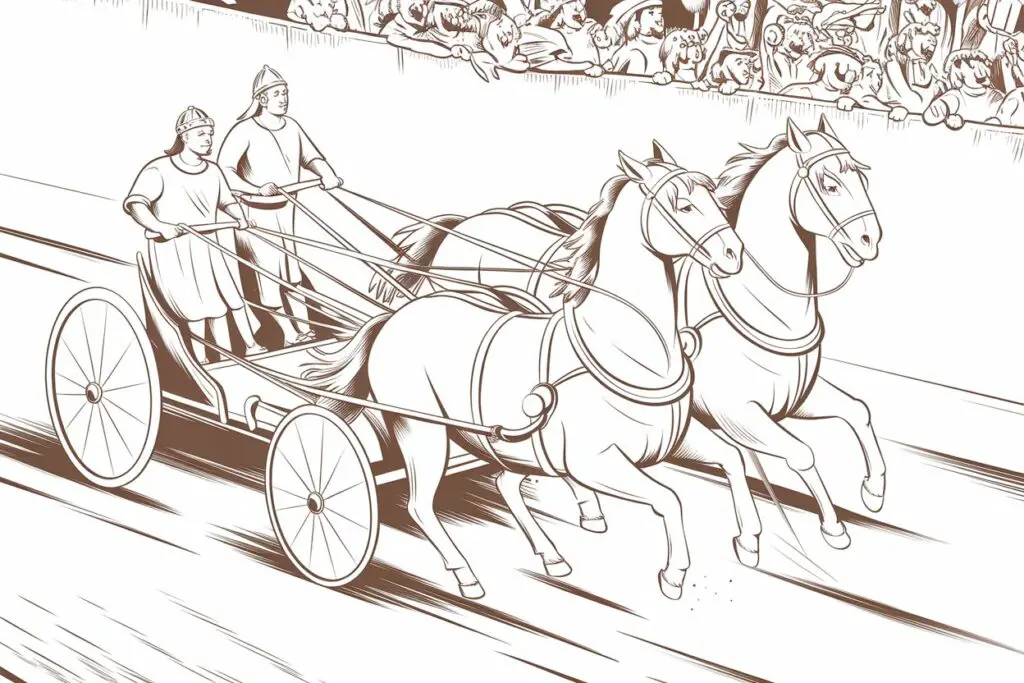1.Roman Gladiator Fights—Combat to the Death for Public Entertainment
Gladiator fights in ancient Rome weren’t just bloodsport—they were a carefully orchestrated fusion of politics, propaganda, and public spectacle. While modern audiences might associate them with Hollywood dramatizations of men battling lions in the Colosseum, the truth is both grittier and more complex. These brutal contests, which spanned from around 105 BCE until their official ban in 404 CE under Emperor Honorius, were originally rooted in Etruscan funeral rites. The first recorded Roman gladiator match occurred in 264 BCE as part of a funerary ritual for Decimus Junius Brutus’s father—a somber send-off that would evolve into mass entertainment on an imperial scale.

The Colosseum, seating up to 50,000 spectators, became the epicenter of these events, where prisoners of war, slaves, and condemned criminals fought in elaborate matches. Some even volunteered, chasing fame and a shot at freedom. Gladiators were trained in special schools called ludi, where they were molded into fighters with distinct styles—like the heavily armored Murmillo, the agile Thracian, or the net-and-trident-wielding Retiarius. Each match was a performance, complete with pageantry, but make no mistake: it was deadly serious. While not every bout ended in death, many did, especially those labeled sine missione—fights with no chance of mercy.
The games weren’t just about violence—they reflected Roman ideals of discipline, courage, and dominance. Victorious gladiators could become celebrities, even earning their freedom with a symbolic wooden sword called a rudis. Yet most died anonymously, cheered on by roaring crowds. As Christianity gained influence, public appetite for these spectacles waned, and by the early 5th century, the era of gladiator combat drew to a close—leaving behind a legacy as one of history’s most brutal and politically charged sports.
2.Greek Pankration—No-Holds-Barred Fighting with Minimal Rules
If you think modern mixed martial arts is intense, ancient Greek pankration would make today’s UFC bouts look like a friendly sparring match. Introduced to the Olympic Games in 648 BCE, pankration—whose name literally means “all power” or “all might” in Greek—was the ultimate test of a warrior’s physical and mental limits. It was a brutal hybrid of boxing and wrestling, but with almost no rules: competitors could punch, kick, elbow, choke, and even break fingers. Only eye-gouging and biting were officially prohibited—but even those were sometimes overlooked, especially in Spartan training.

Pankration matches had no weight classes, no time limits, and no protective gear. Fighters competed naked, slicked with olive oil that made grappling more difficult and, in a twisted way, more entertaining for spectators. Victory came only when one opponent submitted—usually by raising a finger—or was knocked unconscious. The absence of any formal round structure meant that some matches dragged on for hours, often ending in serious injury or death. There are records of pankratiasts who killed their opponents but were still declared losers for failing to wait for a formal submission.
Beyond its role in entertainment, pankration was deeply tied to military training. The techniques developed in the ring were directly applicable on the battlefield, especially for hoplites and elite soldiers. Young boys began pankration training as early as age 12, and successful fighters were celebrated as heroes across the Greek world. Their names were etched into stone, their likenesses sculpted in bronze. Today, historians view pankration not just as a sport but as a window into ancient Greek values—where glory, pain, and victory were often inseparable.
3.Mesoamerican Ball Game—Where Losing Could Mean Death
The Mesoamerican ball game—called ōllamaliztli by the Aztecs and pitz by the Maya—was far more than a recreational pastime; it was a ritualistic spectacle where the stakes could be fatally high. Originating as early as 1600 BCE with the Olmec civilization, and continuing through the Classic and Postclassic periods with the Maya and Aztecs, this game was played across what is now Mexico, Guatemala, Belize, Honduras, and El Salvador. Over 1,500 ballcourts have been discovered throughout the region, each a silent witness to a sport that was equal parts athletic competition, political theater, and cosmic allegory.
What made the game brutal wasn’t just the physical toll—though that alone was staggering. Players used only their hips, elbows, and knees to strike a solid rubber ball that could weigh up to 9 pounds. Imagine hurling your body sideways to redirect a projectile that could easily crack ribs or cause internal injuries. And that was just the warm-up. In many ceremonial contexts—especially under the Aztec Empire—the game culminated in human sacrifice. Iconographic and archaeological evidence, such as reliefs at Chichen Itza, depict decapitated players, their blood transforming into serpents or plant life, symbolizing regeneration and cosmic balance.
The ball game mirrored the eternal struggle between day and night, life and death. The court represented the underworld, and the ball’s movement symbolized the sun’s journey through it. In this cosmic drama, the losing team—or sometimes just its captain—might be ritually executed to appease the gods and maintain universal harmony. While not every match ended in bloodshed, the possibility loomed over each play, blurring the line between sport and sacrifice. Today, modern revivals like pok-ta-pok in Belize preserve the tradition—thankfully minus the execution.
4.Viking Holmgang—Deadly Duels to Settle Disputes
In Viking society, where honor wasn’t just a virtue but a form of currency, the holmgang duel stood as a brutal—yet legally sanctioned—way to settle grievances. Forget courtrooms and judges; if your neighbor encroached on your land or insulted your lineage, you could challenge him to a holmgang, a formalized combat ritual that balanced on the knife’s edge between justice and spectacle. The term itself means “island walk,” a nod to the fact that these duels were often fought on small islands or within a confined space marked by animal hides or hazel staves—essentially creating a combat ring with no room for retreat.

The rules were surprisingly structured for something so violent. Each combatant was allowed three shields, which were typically splintered one after the other as the fight escalated. Swords were the weapon of choice, though axes and spears made appearances too. The duel ended upon first blood, or in more extreme cases, only when one fighter was incapacitated or dead. According to Norse tradition, stepping outside the dueling ring meant forfeiting the match—and your honor. Even failing to show up to a challenge was considered a public disgrace.
Originally intended to prevent blood feuds from spiraling into clan warfare, the holmgang system eventually backfired. As professional duelists began exploiting the practice to amass wealth and settle scores for hire, Scandinavian societies started to see it less as a tool of justice and more as a legalized form of bullying. By the early 11th century, holmgang was banned across much of the Norse world, including Iceland and Norway, marking the end of one of history’s most ritualized and deadly sporting traditions.
5.Egyptian Stick Fighting—Blunt Force Meant Serious Injury
Egyptian stick fighting—known as “Tahtib”—wasn’t just a sport, it was a battlefield rehearsal with splinters. This ancient martial art dates back to the Old Kingdom period, around 2500 BCE, and was originally developed as a military training method for soldiers in Pharaonic Egypt. Armed with long, heavy wooden sticks—typically about four feet in length—combatants would engage in duels that tested strength, agility, and pain tolerance. And here’s the thing: there were no helmets, no padding, and certainly no referees blowing whistles. The goal? Strike your opponent without being struck, ideally in a way that left a lasting impression—sometimes on the skull.
Depictions of Tahtib have been discovered in tombs such as those at the Pyramid of Sahure and the Abusir necropolis, often alongside scenes of wrestling or archery, suggesting it held elite status among martial disciplines. But while it was initially a combat art, over centuries it morphed into a ceremonial tradition, performed at weddings and festivals with rhythmic flair. That evolution, however, didn’t erase its bruising legacy. In its original form, Tahtib bouts often ended with broken bones, concussions, or worse. Fighters targeted vulnerable areas—heads, joints, torsos—using brute force and precision. With no protective gear, injuries were not only common but expected.
Today, Tahtib survives as a folkloric performance and was even recognized by UNESCO in 2016 as part of Egypt’s intangible cultural heritage. Yet, beneath the stylized spins and choreographed strikes lies a brutal past—a reminder that this ancient “dance” was once a fight for survival. And if you think stick fighting sounds tame, just remember: in ancient Egypt, a mistake in the ring didn’t mean losing points. It meant losing consciousness.
6.Celtic Chariot Races—High-Speed, High-Risk Spectacles
Celtic chariot racing wasn’t your average Sunday afternoon pastime—it was a thunderous, bone-rattling display of speed, danger, and elite warrior culture. While the Celts didn’t formalize these races as a “sport” in the modern sense, archaeological evidence and ancient accounts suggest that chariot driving was a high-stakes, high-skill activity that blurred the lines between warfare, spectacle, and ritual. These two-wheeled vehicles, pulled by a pair of horses and driven by standing charioteers, were built light and fast—perfect for both battlefield maneuvers and adrenaline-fueled demonstrations of prestige and prowess.

Dating back to the 3rd century BC, Celtic chariots were especially prevalent in regions like Gaul and Britain, where their use was noted by Roman chroniclers such as Julius Caesar. He described how British warriors would race across rough terrain, leaping off their chariots mid-motion to engage in hand-to-hand combat, then vaulting back aboard as the driver circled around. The skill required was immense. Charioteers had to navigate tight turns at full gallop, often on uneven ground, with no protective gear or margin for error. Crashes weren’t just possible—they were expected.
Though not organized like the Roman circus races, these events had a performative function. They showcased a warrior’s courage, a tribe’s wealth, and even held ceremonial significance—as evidenced by chariot burials and equine iconography on Celtic coins. In essence, chariot racing was a deadly dance between man, beast, and wheel. And in a world without helmets or harnesses, one wrong move could mean being crushed under your own horses or speared by a rival. It’s little wonder that if such a practice were revived today, modern safety regulations would shut it down before the first wheel hit the dirt.
7.Medieval Jousting—A Sport Where Broken Bones Were Common
Medieval jousting may conjure up images of noble knights in shining armor and romantic tournaments beneath fluttering banners—but in reality, it was less fairy tale and more full-contact demolition derby on horseback. Emerging in 11th-century Europe as a martial training exercise, jousting quickly evolved into a high-stakes sport where broken bones weren’t just possible—they were practically expected. Two armored knights would gallop toward each other at speeds up to 30 miles per hour, separated by a wooden tilt barrier, aiming to strike their opponent with a 10-foot lance. The goal? Unseat your rival or shatter your lance against his shield or cuirass in a display of controlled violence and skill.
Despite the heavy plate armor introduced in the 14th century, injuries were rampant. Collarbones, ribs, and arms were commonly fractured. Concussions, internal bleeding, and even death weren’t rare. One of the most infamous examples was the 1559 death of King Henry II of France, whose eye was pierced by a lance splinter during a tournament—he died ten days later from sepsis. Even England’s Henry VIII wasn’t spared: a 1536 jousting accident left him unconscious for two hours and may have triggered the decline in his physical and mental health. Though jousting served as a proving ground for knightly valor and chivalric ideals, it’s safe to say modern athletic commissions would never approve a sport where the prize might be a shattered skull.







